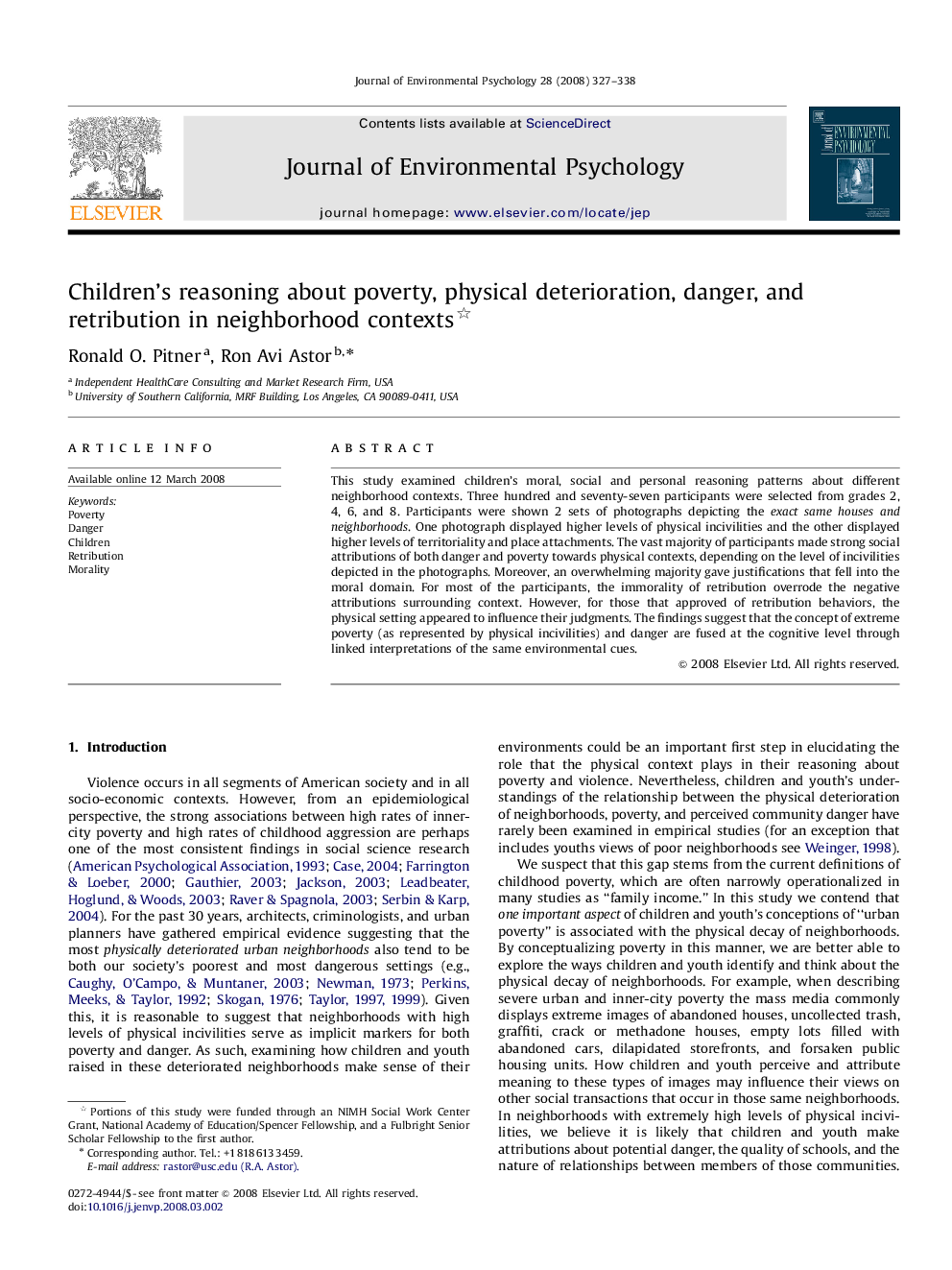This study examined children's moral, social and personal reasoning patterns about different neighborhood contexts. Three hundred and seventy-seven participants were selected from grades 2, 4, 6, and 8. Participants were shown 2 sets of photographs depicting the exact same houses and neighborhoods. One photograph displayed higher levels of physical incivilities and the other displayed higher levels of territoriality and place attachments. The vast majority of participants made strong social attributions of both danger and poverty towards physical contexts, depending on the level of incivilities depicted in the photographs. Moreover, an overwhelming majority gave justifications that fell into the moral domain. For most of the participants, the immorality of retribution overrode the negative attributions surrounding context. However, for those that approved of retribution behaviors, the physical setting appeared to influence their judgments. The findings suggest that the concept of extreme poverty (as represented by physical incivilities) and danger are fused at the cognitive level through linked interpretations of the same environmental cues.
Violence occurs in all segments of American society and in all socio-economic contexts. However, from an epidemiological perspective, the strong associations between high rates of inner-city poverty and high rates of childhood aggression are perhaps one of the most consistent findings in social science research (American Psychological Association, 1993; Case, 2004; Farrington & Loeber, 2000; Gauthier, 2003; Jackson, 2003; Leadbeater, Hoglund, & Woods, 2003; Raver & Spagnola, 2003; Serbin & Karp, 2004). For the past 30 years, architects, criminologists, and urban planners have gathered empirical evidence suggesting that the most physically deteriorated urban neighborhoods also tend to be both our society's poorest and most dangerous settings (e.g., Caughy, O’Campo, & Muntaner, 2003; Newman, 1973; Perkins, Meeks, & Taylor, 1992; Skogan, 1976; Taylor (1997) and Taylor (1999)). Given this, it is reasonable to suggest that neighborhoods with high levels of physical incivilities serve as implicit markers for both poverty and danger. As such, examining how children and youth raised in these deteriorated neighborhoods make sense of their environments could be an important first step in elucidating the role that the physical context plays in their reasoning about poverty and violence. Nevertheless, children and youth's understandings of the relationship between the physical deterioration of neighborhoods, poverty, and perceived community danger have rarely been examined in empirical studies (for an exception that includes youths views of poor neighborhoods see Weinger, 1998).


